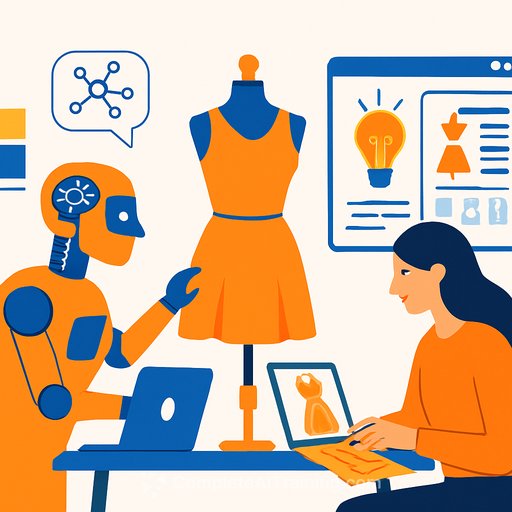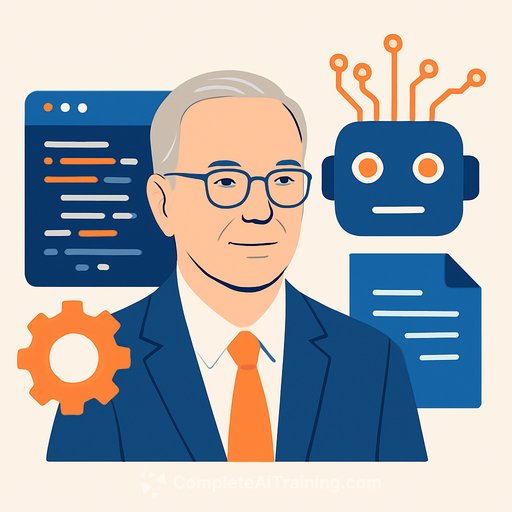Innovation Accelerating Fashion's Future: How AI Is Redefining New Product Development
Speed drives success in fashion. Brands that react quickly and accurately to shifting consumer trends win. Traditional product development cycles—often lasting 30 to 40 weeks—fail to keep up with today’s demand for immediacy and fresh ideas. Fashion companies are turning to artificial intelligence (AI) to close this gap. By 2027, half of business decisions are expected to be assisted or automated by AI, making this transformation inevitable.
New Product Development (NPD): The High-Stakes Fashion Battlefield
New product development in fashion is all about predicting what customers want and delivering it fast. It starts with trend forecasting and consumer research, providing the creative spark for designers. These ideas are then converted into detailed technical documents to guide prototyping. Finally, production, marketing, and logistics align to launch products on time. Traditionally, this has been a slow, siloed process. Leading brands are now speeding things up by digitizing workflows, connecting teams, and building product ecosystems that respond in real-time to consumer demand.
The Traditional NPD Lifecycle: Too Slow for the Market
The standard NPD process begins with market analysis to spot trends. Designers sketch concepts that fit the brand and current styles. These concepts turn into tech packs outlining every manufacturing detail—from materials to fit. Multiple prototype rounds follow before launch. Many steps still happen in sequence, stretching timelines up to 40 weeks. Considering trends can vanish in a month, this pace is a major drawback.
For example, an Indian consumer goods company found that shortening its cycle required better consumer listening. Using AI to track wellness and gut health trends among more than 40 consumers, they crafted a product strategy closely tied to what customers wanted, leading to successful launches.
The AI Opportunity: Smarter, Faster Product Development
AI shrinks timelines and improves decisions across the NPD chain. Predictive and generative AI now form the core of innovation strategies, speeding up processes while cutting costs. AI accelerates insight generation and feeds data-rich inputs into every development stage. Fashion leaders should focus on AI-driven consumer insights and demand sensing to stay ahead of shifting preferences and manage product lifecycles with real-time data.
- Trend Insight Agent: Tools like Heuritech and EDITED scan social media, search, and sales data to forecast consumer desires.
- Design Iteration Agent: Platforms such as MidJourney and DALL·E let design teams create multiple concept variations in seconds, speeding up ideation.
- BOM Automation Agent: AI automatically generates bills of materials from designs, reducing errors and accelerating production planning.
- Virtual Prototyping Agent: Digital simulations visualize garment fit and fabric behavior, cutting down on physical samples.
- Launch Optimization Agent: AI analyzes past sales, market trends, and consumer behavior to recommend the best launch timing and strategies.
AI in Action: Real Results from Fashion Leaders
Global fashion brands are already benefiting from AI. One athleisure leader uses AI-driven platforms like VibeIQ to produce design concepts and enable smooth collaboration, accelerating design approval. An online fashion retailer pairs human stylists with machine learning to deliver personalized style suggestions, boosting customer loyalty. Meanwhile, a premium brand partnered with a tech giant for AI-powered consumer sentiment analysis, improving product-market fit.
Strategic Moves for Fashion Leaders
AI is now a strategic priority rather than just a tool for optimization. By 2027, companies with AI-literate leadership will see up to 20% better financial results. Fashion businesses need to link AI investments to outcomes like faster innovation, leaner supply chains, and stronger consumer connections.
- Train teams to collaborate effectively with AI, combining creativity with digital skills.
- Break down silos between design, merchandising, supply chain, and tech through integrated product squads.
- Adopt agile, data-driven development models that allow quick pivots toward new opportunities.
These changes require a fundamental shift in how fashion companies innovate and operate.
The Future in Motion
Fashion is moving from intuition-led creation to intelligence-driven development. AI agents are no longer experimental; they shape how collections are imagined, developed, and launched. Early adopters report cutting NPD cycle times by 30% to 40%. AI doesn’t replace creativity or brand identity—it amplifies both, enabling designers to dream bigger, move faster, and connect deeper with customers. Standing still means risking market share and relevance. The future of fashion will be fast and smart.
For those in product development seeking to build AI skills that drive these transformations, exploring specialized AI training can provide a competitive edge. Check out Complete AI Training for courses tailored to mastering AI tools and techniques that accelerate innovation.
Your membership also unlocks:






